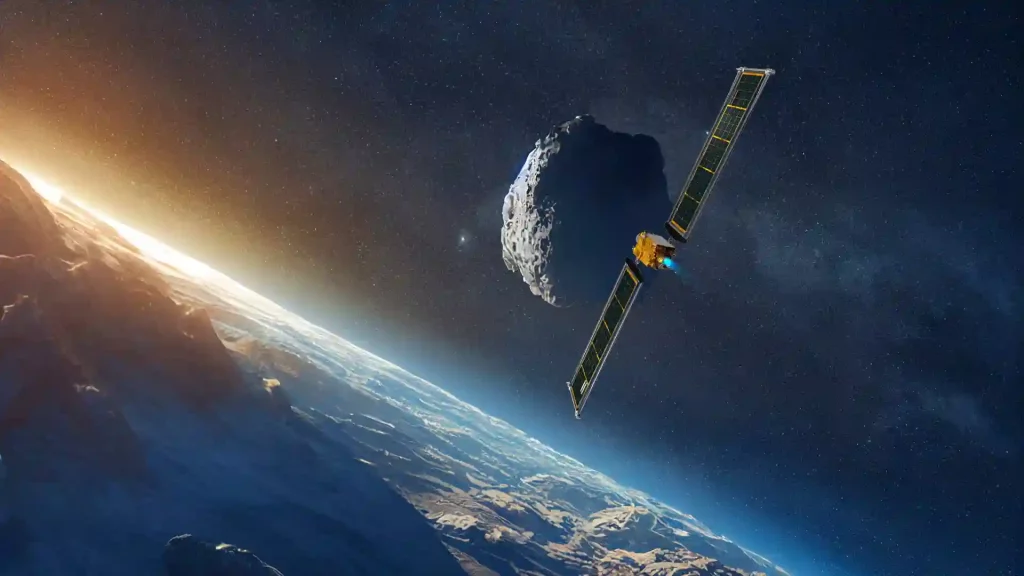DART’s impact on the asteroid makes it a viable technique to protect the planet from any detectable earthbound asteroid or comet.
DART mission by NASA, the world’s first planetary defense technology demonstration was successful after it collided with an asteroid on target after 10 months of flying in space. The success of the DART (Double Asteroid Redirection Test)’s impact on the asteroid makes it a viable technique to protect the planet from any detectable earthbound asteroid or comet.
NASA administrator Bill Nelson states that DART represents an unparalleled success for planetary defense and a mission that is helpful for all mankind. He adds that NASA along with studying the cosmos and earth also looks for ways to safeguard the earth and the international collaboration has helped to turn “science fiction into science fact”, demonstrating a way to protect the earth.
DART targeted the asteroid moonlet named Dimorphos which is a small body just 530 feet in diameter. It orbits a larger, 2,560-foot asteroid called Didymos. Both the asteroids, Dimorphos, and Didymos do not pose a threat to earth. The mission’s success confirmed that NASA can successfully steer a spacecraft to intentionally strike an asteroid to avert it and the technique is known as kinetic impact. The investigation team will observe Dimorphos using the available ground-based telescopes to verify that DART’s impact has varied the asteroid’s orbit around Didymos.
Lindley Johnson, NASA’s Planetary Defense Officer says that DART’s success provides a major addition to the essential toolbox they must have to protect Earth from a life-threatening impact by an asteroid. Lindley Johnson states that the mission’s success reveals that humans are not unable to prevent this type of natural disaster.
With the help of enhanced capabilities that could help the researchers in finding the remaining harmful asteroids that could be a threat to humankind by the next Planetary Defense mission, the Near-Earth Object (NEO) Surveyor, a DART successor could provide what they require to save the planet. Researchers expect the impact to reduce Dimorphos’ orbit by about 1%, or roughly 10 minutes. The main purpose of conducting the full-scale test was to determine the measurement of the deflection of the asteroid.
Associate administrator for the Science Mission Directorate at NASA Headquarters in Washington, Thomas Zurbuchen states that planetary defense is a unifying effort that affects everyone on the planet. He further adds that a spacecraft can now be aimed with precision to target a small body in space and with a slight change in speed, a considerable difference can be made in the path of asteroid travel.
Didymos Reconnaissance and Asteroid Camera for Optical navigation (DRACO) along with refined supervision, navigation, and control system that works simultaneously with Small-body Maneuvering Autonomous Real Time Navigation (SMART Nav) algorithms, aided DART to identify and differentiate between the two bodies and aim for the smaller one. These efficient systems enabled the 1,260-pound spacecraft which was box-shaped and guided it through the final 56,000 miles, around 90,000 kilometers of space into Dimorphos, and deliberately crashed into it at around 14,000 miles per hour to slow the orbit’s speed.
DRACO’s final image received by the spacecraft before collision shows the outer surface of Dimorphos in close-up detail. Fifteen days before impact, DART’s CubeSat companion Light Italian CubeSat for Imaging of Asteroids (LICIACube) that was provided by the Italian Space Agency was deployed from the spacecraft to capture images of DART’s impact and the asteroid’s resulting cloud of emitted matter.
United with the images returned by DRACO, LICIACube’s images is mainly intended to provide a view of the effect of the collision that will assist the researchers to learn more about the efficacy of the kinetic impact to deflect the asteroid. Due to the lack of a large antenna for LICIACube, images will be downlinked to Earth one by one in the upcoming weeks.
A global team with several telescopes positioned around the world will observe space and in the upcoming weeks, the team will study and distinguish the ejecta produced and measure Dimorphos’ orbital change to decide how the collision of DART deflected the asteroid. Hera project, a project by European Space Agency will conduct thorough surveys of Dimorphos and Didymos, mainly focusing on the crater left by the collision and also looking at the measurement of Dimorphos mass four years from now.
